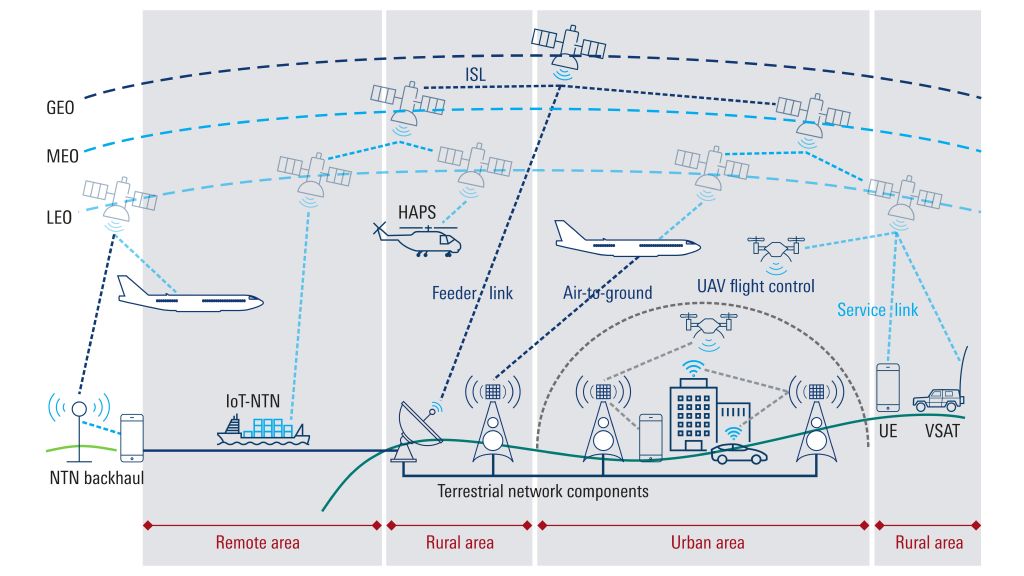
3GPP has established two basic 5G NTN architecture approaches: Transparent and Regenerative
According to Rohde & Schwarz’s Wireless unit Technology Manager Reiner Stuhlfauth, the integration of non-terrestrial networks (NTNs) and terrestrial 5G networks is an architectural “paradigm shift.” In a blog post, he explained further that the term “base station” doesn’t really apply to NTNs. “Instead, network nodes are integrated into satellites and move relative to the Earth’s surface,” he said, adding that in 6G, multi-orbit networks made up of LEO, MEO and GEO all hovering at different altitudes will be a reality. He called this a “3-dimensional network.”
Work on NTN continues to progress as we move towards 6G, and for its part, the 3GPP has established two basic architecture approaches: Transparent and Non-Transparent, or Regenerative. The Transparent payload or “bent-pipe” architecture relies on the satellite to basically play a very limited role of a signal repeater in space, with the waveform signal being unchanged. The 5G signal more or less bounces off the satellite and returns to Earth.
The Regenerative payload, however, requires the satellite to provide some or all of the base station/gNodeB functions, which means the satellite has to be capable of more, 5G-specific processing capabilities and active enhancement of the 5G signal, including frequency conversion and amplification as well as demodulation/ decoding, coding/modulation and switching and/or routing. In addition, the Regenerative model accounts for the option of inter-satellite links (ISL) used by a constellation of satellites. Regenerative payloads are required in order to use ISL.
“The future regenerative mode, currently discussed as a work item in Release 19, will incorporate either the entire or disaggregated gNB functions into the satellite access node (SAN),” wrote Stuhlfauth. “The objective is to have faster scheduling decisions as well as more processing and computing power in the satellite node. However, this comes at the price of higher complexity.”

And that added architectural complexity will lead to increased test complexity for test and measurement companies like Rohde & Schwarz. “In principle, terminal equipment for 5G satellite communications has the same transmitter and receiver requirements as those for terrestrial networks,” Stuhlfauth wrote. “However, the devil is in the details: there will be several different test setups and methodologies depending on the NTN UE [user equipment] capability and use case.”
For example, NTN-IoT devices will use a low-complexity architecture, making them relatively easy — or familiar, at least — to test, but extended testing will be required for future NTN UE’s like very-small-aperture terminals (VSATs) because they will involve beamforming, higher frequencies and wider bandwidth.
Additional testing hurdles include challenging signal propagation conditions and ensuring the seamless synchronization of NTN and terrestrial infrastructure. Further, one requirement of NTN terminals is terrestrial position determination, and so it’s mandantory for NTN user equipment (UE) to support positioning based on GNSS signals.
However, Rohde & Schwarz says its solutions portfolio includes equipment that’s up for the task — signal generators to simulate the GNSS signal for UE position determination. Signal generators, as well as signal analyzers, can also satellite UE to support the need for additional interferer scenarios and extended spectrum analysis, while CATR-based OTA chambers can provide the ideal environment for testing 5G FR2 antennas. The company also said its products are modular, which allows for the needed scalability, customization and expansion to meet specific and demanding testing requirements as new technologies — and therefore, complexities — emerge.







